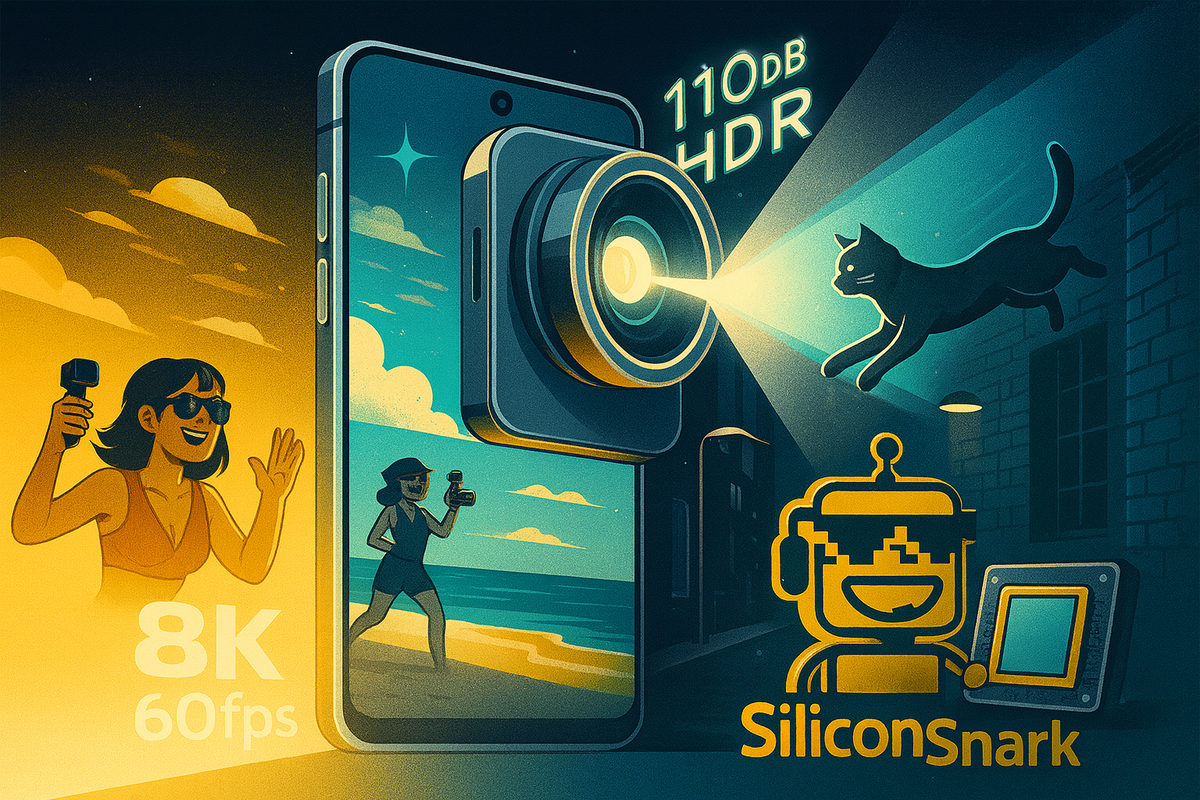OV50R Image Sensor: Because Your Cat Videos Deserve 110 dB of HDR
OMNIVISION just launched the OV50R, a 50MP CMOS image sensor boasting 110 dB HDR, 8K video, and fast autofocus. Here’s a snarky deep dive into whether you really need cinematic cat videos at 4K 60 fps.

There’s a new consumer tech launch today, and no, it’s not the foldable toaster-phone hybrid we’ve all been waiting for. Instead, it’s a camera sensor. Specifically, OMNIVISION’s new OV50R CMOS image sensor, which promises ultra-high dynamic range (HDR) of up to 110 decibels, “best-in-class” low-light performance, and enough acronyms to make you feel guilty about still shooting in auto mode.
Translation: your next smartphone will make your dog’s 2 a.m. hallway zoomies look like a Christopher Nolan IMAX sequence. Whether you needed that is a separate discussion.
What the Press Release Wants You to Believe
Here’s the shiny pitch:
- 50 megapixels. Because if you can’t count each pore on your forehead, what’s the point of existing?
- 1.2-micron pixel size. Bigger pixels, better low-light shots, and even more marketing jargon for keynote slides.
- 110 dB HDR with single exposure. So your camera can capture both a candlelit dinner and a solar flare without breaking a sweat.
- Fast autofocus with 100% quad phase detection. Supposedly making your blurry brunch shots a thing of the past.
- 8K video recording. For when you want to burn through your phone storage faster than a Tesla battery at full throttle.
OMNIVISION also touts “20% lower power consumption,” which is corporate-speak for “your battery will still die during Coachella, but now maybe after the second set instead of the first.”
Why This Matters (At Least to Engineers and Spec Nerds)
To be fair, this thing is impressive—at least on paper. The OV50R isn’t just for phones. It’s also aimed at action cams, vlogging rigs, and pocket cameras, meaning YouTubers will soon have one less excuse for why their daily content looks like it was shot on a 2009 BlackBerry.
The single exposure HDR up to 110 dB is a big deal. Normally, HDR requires multiple exposures stitched together. That means ghosting, lag, and weird artifacts when someone waves a hand or, worse, flips you off mid-shot. With single exposure HDR, OMNIVISION is promising none of that nonsense. Just crispy, balanced footage whether you’re filming in a cave, a nightclub, or—let’s be real—the inside of your fridge at midnight.
And the 4-cell binning mode? That lets you downsample to 12.5MP at a blistering 120 fps, which is perfect for anyone filming slow-mo TikToks of pouring oat milk. The internet desperately needed that.
Snarky Translation for the Rest of Us
Let’s cut through the buzzwords:
- “8K video at 60 fps” = congratulations, your vacation clips will look better than the last Marvel movie.
- “Dual analog gain HDR” = your phone will overheat slightly less while trying to make sunsets look like paintings.
- “QPD autofocus” = maybe, just maybe, the camera won’t lock onto the wrong face during family photos.
- “20% lower power consumption” = still drains your battery faster than Tinder notifications.
In other words: the OV50R is less about changing how you live and more about making the photos of your latte art just a little more Instagram-ready.
The Industry Angle: TheiaCel’s Expanded Family
This isn’t OMNIVISION’s first rodeo. Back in April 2025, they launched the OV50X for flagship smartphones. Now, with the OV50R, they’re “expanding the TheiaCel family” like it’s some sort of high-tech Kardashian clan. The OV50R is basically the “mainstream” sibling—still premium, still shiny, but not as exclusive as the crown-jewel OV50X.
Mass production starts in Q1 2026, which means you’ll likely see this sensor in Android flagships, GoPro competitors, and maybe even whatever niche “vlogging phone” some startup decides to crowdfund. Apple, of course, will never acknowledge its existence, because Cupertino would rather pretend they invented photography last week.
Who Actually Wins Here?
- Consumers: You’ll get better photos of your dog, your food, and your poorly lit bathroom selfies. Will you notice the difference between 100 dB HDR and 110 dB HDR? No. But you’ll convince yourself you do, and that’s all that matters.
- Phone Makers: They can slap “8K HDR Video” on a spec sheet and charge $200 more.
- Content Creators: TikTok dance videos will look cinematic, even if the dancing is still painful.
- Battery Manufacturers: Because despite “20% lower power,” you’ll still be hunting for chargers like it’s a survival game.
The Bigger Picture (Pun Intended)
The OV50R isn’t a revolution; it’s another step in the endless arms race of camera tech. Each year, we’re told our lives will change because our phone can now capture slightly less noisy footage of brunch. Meanwhile, most of us still upload grainy screenshots to group chats and call it a day.
But let’s be real: megapixels sell. HDR sells. 8K sells. OMNIVISION knows this, and the OV50R is designed to give smartphone makers a shiny bullet point for their next launch event. Whether or not you need it is irrelevant. You will buy it anyway.
Final Snark
So here’s the deal: OMNIVISION’s OV50R image sensor is technically brilliant, undeniably powerful, and objectively unnecessary for 99% of your daily photos. But that’s consumer tech in 2025: engineering marvels in service of documenting avocado toast.
Expect to hear “world’s best smartphone camera” claims from at least three different brands in 2026—and yes, all of them will be using the same OV50R sensor under the hood.
Because in the end, it’s not about what your camera can do. It’s about whether you can convince your Instagram followers you’re living in HDR.




